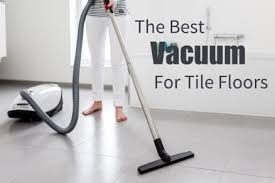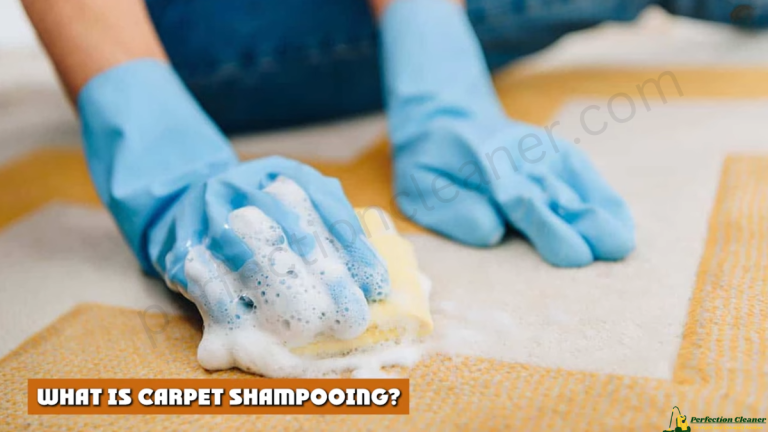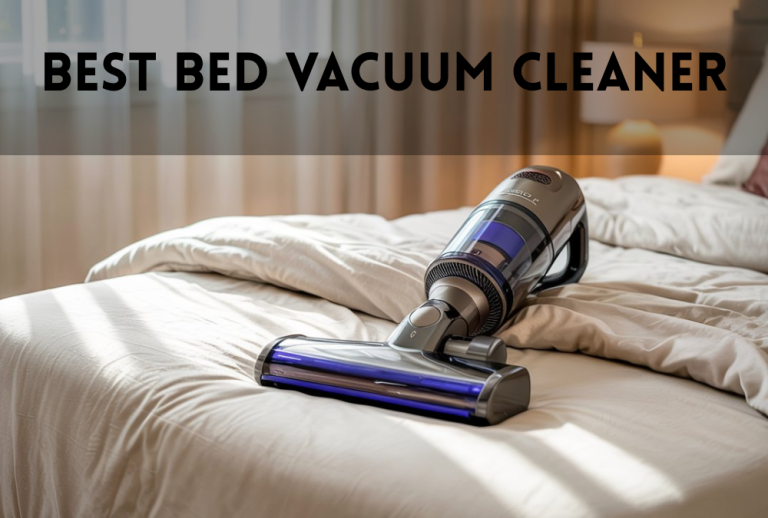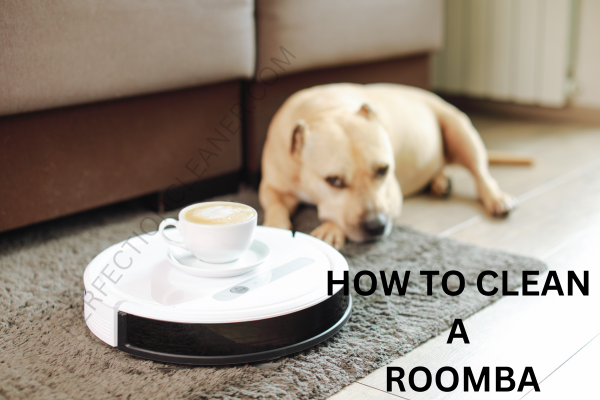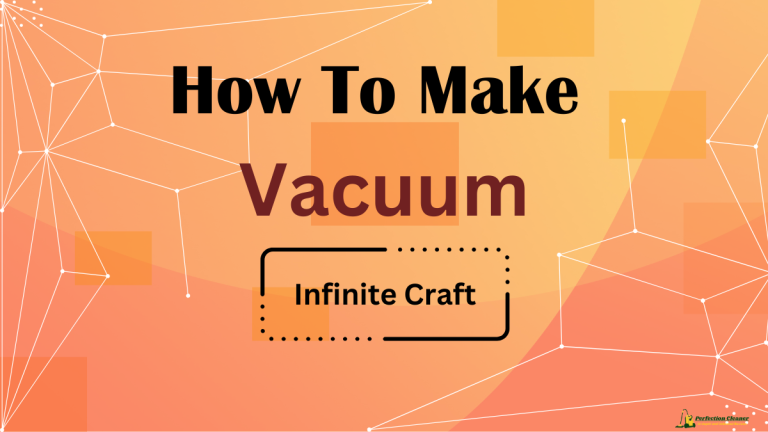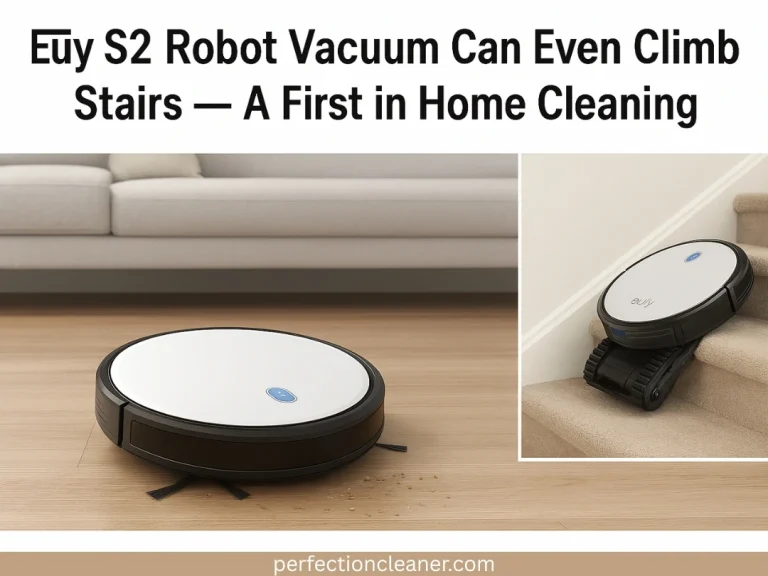Best Vacuum Cleaner for Tile Floors in 2024
We’ll delve into everything you need to know about achieving spotless, gleaming tile floors with the help of your vacuum cleaner. From selecting the right vacuum to mastering the best techniques, we’ve got you covered.
Understanding the Importance of Proper Tile Floor Care:
Tile floors add a touch of stylishness and durability to any home, but they also require special care to maintain their beauty and long life. Unlike carpeted floors, tile surfaces are prone to accumulating dirt, grime, and even stubborn stains, making regular cleaning essential. Vacuuming is a crucial part of this maintenance routine, as it helps remove debris and allergens from the surface and grout lines, leaving your floors not just clean but also hygienic.
Choosing the Right Vacuum Cleaner for Tile Floors:
Before diving into the nitty-gritty of vacuuming techniques, let’s first discuss the importance of selecting the right vacuum cleaner for tile floors. Not every vacuum is created equal, and choosing the wrong one could potentially damage your tile or fail to deliver optimal cleaning results. When shopping for a vacuum cleaner tailored explicitly for tile floors, look for features such as adjustable suction power, specialized attachments for hard surfaces, and a gentle yet effective brush roll designed to capture dirt without scratching the tiles.
Exploring Vacuuming Techniques for Tile Floors:
Now that you’ve equipped yourself with the perfect vacuum cleaner for your tile floors, it’s time to explore the best techniques for achieving pristine results. Unlike vacuuming carpeted surfaces, which typically requires a back-and-forth motion, cleaning tile floors involves a slightly different approach. Start by clearing the particular area of any loose debris using a broom or dry mop, then switch to your vacuum cleaner. For larger spaces, work in small sections, overlapping your passes to ensure thorough cleaning. Pay special attention to high-traffic areas and hard-to-reach corners where dirt tends to accumulate.
Maximizing Efficiency and Effectiveness:
To maximize the efficiency and effectiveness of your vacuuming efforts, consider incorporating additional cleaning tools and techniques into your routine. For example, using a crevice tool attachment can help reach tight spaces and along baseboards. At the same time, a microfiber mop can provide the finishing touch by picking up any remaining dust or residue. Additionally, scheduling regular deep cleanings with a steam cleaner or tile-specific cleaning solution can help maintain the elegance and integrity of your tile floors for years to come.
You’re well on your way to mastering the art of vacuuming tile floors like a pro. Remember to invest in the right vacuum cleaner for your specific needs, practice proper cleaning techniques, and incorporate additional tools and solutions as needed. By taking the time to care for your tile floors properly, you’ll not only enjoy a cleaner and healthier home but also prolong the life and beauty of your flooring investment. Get ready to step into a world of sparkling clean surfaces and newfound confidence in your cleaning prowess!
Benefits of Using a Vacuum for Tile Floors:
Maintaining the cleanliness and durability of your tile floors is essential for a pristine and welcoming home environment. While traditional cleaning methods such as sweeping and mopping have their merits, incorporating a vacuum cleaner into your tile floor maintenance routine offers a myriad of benefits that can elevate your cleaning game to new heights. Let’s explore some of the critical advantages of using a vacuum for tile floors:
Enhanced Efficiency:
Vacuum cleaners are designed to efficiently remove dirt, dust, and debris from various surfaces, including tile floors. Unlike sweeping, which can sometimes scatter dust and allergens into the air, a vacuum’s powerful suction ensures that dirt is effectively captured and contained within the machine, leaving your floors cleaner in less time.
Deeper Cleaning:
One of the standout benefits of using a vacuum for tile floors is its ability to provide a deeper level of cleaning compared to traditional methods. Vacuums equipped with specialized attachments and brush rolls can effectively agitate and lift embedded dirt from the surface and grout lines, resulting in a more thorough clean.
Improved Indoor Air Quality:
Tile floors may appear to be effortless to maintain. However, they have the potential to accumulate dust, pet dander, and various allergens that can have a detrimental effect on the quality of indoor air. By employing a vacuum cleaner equipped with a HEPA filtration system, you can effectively capture and trap airborne particles, preventing them from circulating back into the air and helping to create a healthier living environment for you and your family.
Gentle Yet Effective Cleaning:
Some homeowners may hesitate to use a vacuum on tile floors out of fear of scratching or damaging the surface. However, modern vacuum cleaners are equipped with features such as adjustable suction power and gentle brush rolls designed explicitly for use on hard surfaces like tile. It allows for effective cleaning without the risk of causing any harm to your floors.
Versatility:
In addition to cleaning tile floors, many vacuum cleaners offer versatile functionality; with ease, you can effortlessly handle a diverse array of cleaning tasks. From vacuuming upholstery and curtains to removing pet hair and debris from stairs, investing in a quality vacuum cleaner provides you with a versatile cleaning solution that can handle multiple surfaces throughout your home.
From enhanced efficiency and deeper cleaning to improved indoor air quality and versatility, the benefits of using a vacuum for tile floors are clear and compelling. By incorporating a vacuum cleaner into your tile floor maintenance routine, you can achieve cleaner, healthier, and more beautiful floors with minimal effort and maximum results. Say goodbye to tedious sweeping and mopping and hello to a new era of effortless and effective tile floor cleaning!

Important features to consider when choosing a vacuum for tile floors
When it concerns selecting the ideal vacuum cleaner for your tile floors, it’s essential to consider several important features to ensure optimal cleaning performance and the preservation of your flooring investment. Here are some key factors to keep in mind when choosing a vacuum for tile floors:
Adjustable Suction Power:
Search for a vacuum cleaner that offers customizable suction power options, enabling you to adjust the cleaning intensity according to the requirements of your tile floors. Lower suction settings are ideal for delicate tiles or when vacuuming more lightly soiled areas, while higher suction settings can tackle tougher messes and embedded dirt.
Specialized Attachments:
Choose a vacuum cleaner that is equipped with specialized attachments specifically designed for cleaning tile floors. These attachments, such as a hard floor brush or a soft brush roll, are both gentle and efficient in removing dirt and debris from tile surfaces without causing any scratches or damage.
Gentle Brush Roll:
Make sure that the vacuum cleaner is furnished with a brush roll that possesses a gentle nature suitable for tile floors. Seek out soft bristles or materials made of rubber that will not cause any scratches or friction on the tile surface while still effectively agitating to dislodge dirt and debris from the grout lines.
HEPA Filtration System:
For improved indoor air quality, consider choosing a vacuum cleaner with a HEPA filtration system.HEPA filters possess the ability to capture and confine minuscule particles like dust, pollen, and pet dander, thereby preventing their re-release into the air during the cleaning process.
Lightweight and Maneuverable Design:
Tile floors often require frequent vacuuming, especially in high-traffic areas. Hence, choose a lightweight and easily maneuverable vacuum cleaner that will enable effortless navigation around furniture, narrow areas, and various obstacles without exerting any strain or fatigue.
Corded vs. Cordless:
Please take into consideration your preference for either a corded or cordless vacuum cleaner when it comes to cleaning your tile floors. Cordless options provide the advantage of unrestricted movement and are perfect for swift cleanups, although they may have a limited battery life. On the other hand, corded models offer continuous power for longer cleaning sessions but necessitate access to power outlets.
Durability and Build Quality:
Invest in a durable vacuum cleaner that is specifically designed to endure the demands of frequent usage on tile surfaces. Look for models constructed from durable materials with sturdy construction and reliable components, ensuring years of reliable performance and durability.
By considering these essential features when choosing a vacuum cleaner for your tile floors, you can select a model that meets your cleaning needs and provides optimal results without compromising the integrity of your flooring surfaces. Whether you prioritize adjustable suction power, specialized attachments, or HEPA filtration, finding the right vacuum cleaner will make maintaining your tile floors a breeze.
How to properly clean tile floors with a vacuum
Now that you’ve selected the perfect vacuum cleaner for your tile floors, it’s time to dive into the techniques for achieving optimal cleaning results. Properly cleaning tile floors with a vacuum involves more than just running the machine across the surface. Follow these instructions to ensure thorough and effective cleaning:
Clear the Area:
Before you begin vacuuming, remove any obstacles and clutter from the area to be cleaned. It includes moving furniture, rugs, and other items that may obstruct the vacuum’s path. Clearing the area allows for uninterrupted cleaning and ensures that every inch of the tile floor receives attention.
Sweep or Dry Mop:
For optimal results, start by sweeping or dry mopping the tile floor to remove loose debris, dirt, and dust. This initial step helps prevent the vacuum cleaner from becoming clogged with larger particles and ensures more efficient cleaning. Please pay particular attention to corners, edges, and difficult-to-access areas where dirt tends to gather.
Select the Right Attachment:
Choose the appropriate attachment for vacuuming tile floors. Opt for a hard floor brush or a soft brush roll attachment specifically designed for use on hard surfaces. These attachments provide gentle yet effective cleaning without scratching or damaging the tiles.
Adjust Suction Power:
Please adjust the suction strength of the vacuum cleaner to an appropriate level for effectively cleaning tile floors. Start with a lower suction setting and gradually increase as needed to remove stubborn dirt and debris. Avoid using excessively high suction power, as this can potentially damage the tiles or lift them from the subfloor.
Work in Sections:
Divide the tile floor into manageable sections and focus on cleaning one area at a time. Work methodically, moving the vacuum in overlapping passes to ensure thorough coverage and maximum dirt removal. Pay attention to high-traffic areas, entryways, and spots prone to spills or stains.
Pay Attention to Grout Lines:
Remember to pay special attention to grout lines when vacuuming tile floors. Use a crevice tool or a specialized attachment with bristles to agitate and remove dirt and grime from the grout lines effectively. Regularly cleaning grout lines helps prevent discolouration and keeps your tile floors looking fresh and rejuvenated.
Finish with a Mop or Steam Cleaner:
After vacuuming, consider giving your tile floors a final once-over with a mop or steam cleaner for added cleanliness and shine. Use a gentle cleaning solution or water to mop the floors, ensuring that any remaining dirt or residue is thoroughly removed. Steam cleaning provides a deep, sanitizing clean that helps eliminate bacteria and germs from the tile surface and grout lines.
By following these steps and techniques for adequately cleaning tile floors with your vacuum cleaner, you can achieve sparkling clean results that enhance the beauty and longevity of your flooring. With a bit of time and effort, you’ll enjoy the satisfaction of stepping onto flawlessly clean tile floors that are sure to impress guests and elevate the ambience of your home.
Maintenance and care for your vacuum and tile floors
It is crucial to properly maintain both your vacuum cleaner and tile floors in order to extend their lifespan and guarantee optimal performance. By following these maintenance and care tips, you can keep your cleaning tools in top condition and preserve the beauty of your tile floors for years to come:
1. Regular Vacuum Cleaner Maintenance:
- Empty the Dustbin or Replace the Bag: After each use, empty the dustbin or replace the vacuum bag to prevent dirt and debris from accumulating and causing clogs.
- Clean or Replace Filters: Check and clean the filters regularly to maintain suction power and prevent dust and allergens from being released back into the air. Replace filters as needed according to the manufacturer’s recommendations.
- Inspect Brush Roll and Attachments: Ensure that the brush roll is free from any entangled hair, string, or debris by carefully removing it. And inspect attachments for signs of wear or damage. Clean or replace worn attachments to ensure optimal cleaning performance.
- Check for Blockages: Periodically check for blockages in the vacuum cleaner’s hose, wand, and brush roll area. Clear any obstructions to maintain consistent suction and prevent overheating.
2. Tile Floor Maintenance and Care:
- Clean Spills Promptly: It is crucial to promptly address spills and stains to avoid their penetration into the grout lines, which can lead to unsightly discolouration or even damage to the tiles.
- Use Gentle Cleaning Solutions: When mopping or spot-cleaning tile floors, use gentle cleaning solutions that are specifically formulated for use on tile surfaces.
- Protect High-Traffic Areas: To reduce the impact of foot traffic on tile floors, it is advisable to strategically position place mats or rugs in frequently used areas like entryways and hallways. It will assist in reducing the damage and deterioration caused by continuous usage. It helps preserve the integrity of the tiles and extends their lifespan.
- Seal Grout Lines: Periodically seal grout lines to prevent moisture, dirt, and stains from penetrating the grout and causing discolouration or deterioration. Please seek advice from a professional or adhere to the manufacturer’s guidelines to determine the suitable sealing schedule.
- Avoid Scratching: Use felt pads or furniture coasters under heavy furniture legs to prevent scratching or scuffing of the tile floors. Avoid dragging heavy objects across the tiles, as this can cause permanent damage.
3. Schedule Regular Maintenance:
- Create a schedule for regular maintenance tasks such as vacuuming, mopping, and deep cleaning of tile floors. Consistent upkeep helps prevent dirt and grime buildup and ensures that your floors remain neat, & clean, and beautiful.
- Schedule Professional Cleanings: Consider scheduling professional cleanings for your tile floors periodically to remove stubborn stains, deep-seated dirt, and grime. Professional cleaners possess the necessary skills and tools to attain optimal outcomes while ensuring the preservation of your flooring.
By following these maintenance and care tips for both your vacuum cleaner and tile floors, you can enjoy cleaner, healthier living spaces. With a bit of diligence and attention to detail, you’ll ensure that your home remains a welcoming sanctuary for years to come.
Related: HOW LONG WILL A ROBOT VACUUM CLEANER LAST
Common mistakes to avoid when vacuuming tile floors
While vacuuming tile floors may seem straightforward, inevitable common mistakes can compromise cleaning effectiveness and potentially harm your flooring. Here are some common mistakes to steer clear of:
1. Using the Wrong Vacuum Cleaner:
- Mistake: Using a vacuum cleaner designed primarily for carpeted surfaces on tile floors can lead to ineffective cleaning and potential damage.
- Solution: Invest in a vacuum cleaner specifically designed for hard surfaces like tile floors, equipped with features such as adjustable suction power and gentle brush rolls to ensure safe and effective cleaning.
2. Neglecting to Sweep or Dry Mop:
- Mistake: Skipping the step of sweeping or dry mopping before vacuuming can result in the vacuum cleaner pushing dirt and debris around rather than effectively removing it.
- Solution: Always sweep or dry mop your tile floors prior to vacuuming to remove loose debris and ensure that the vacuum cleaner can focus on capturing embedded dirt and dust.
3. Using Excessive Suction Power:
- Mistake: Cranking up the suction power to the maximum setting may seem like a good idea for deep cleaning, but it can actually cause damage to the tile surfaces or lift them from the subfloor.
- Solution: Adjust the suction power of your vacuum cleaner to a moderate level suitable for tile floors, and avoid using excessive force that could potentially harm the flooring.
4. Neglecting Grout Lines:
- Mistake: Ignoring grout lines during vacuuming can result in dirt and grime buildup, leading to unsightly discolouration and potential deterioration of the grout.
- Solution: Use specialized attachments or a crevice tool to effectively clean grout lines, ensuring that they remain free from dirt and stains for a polished appearance.
5. Rushing Through the Process:
- Mistake: Speeding through the vacuuming process requires taking the time to thoroughly clean each section of the tile floor to avoid missed spots and uneven cleaning.
- Solution: Take your time when vacuuming tile floors, working in small sections and overlapping passes to ensure thorough coverage and maximum dirt removal.
6. Neglecting Regular Maintenance:
- Mistake: Please perform regular maintenance on your vacuum cleaner, such as emptying the dustbin or replacing filters, which can lead to decreased suction power and compromised cleaning performance.
- Solution: Establish a routine for regular vacuum cleaner maintenance, including emptying the dustbin, cleaning or replacing filters, and checking for blockages to ensure optimal functionality.
By avoiding these mistakes and implementing proper vacuuming techniques, you can achieve cleaner, more beautiful tile floors with minimal effort and maximum results. With a bit of attention to detail and the right approach, you’ll enjoy sparkling clean surfaces that enhance the overall look and feel of your home.

Is Vacuuming Good for Tile Floors?
There’s a common misconception that there may be better approaches to cleaning them than vacuuming tile floors. However, contrary to popular belief, vacuuming is indeed a highly effective and safe method for maintaining the cleanliness and appearance of tile floors. Let’s delve deeper into why vacuuming is not just good but actually beneficial for tile floors:
Efficient Dirt Removal:
Vacuum cleaners come with robust suction capabilities that efficiently remove dust and debris from the surfaces of tile floors. Unlike sweeping, which can sometimes push dirt around or leave behind residue, vacuuming ensures thorough and efficient removal of particles, leaving your tile floors cleaner in less time.
Gentle Cleaning Action:
Modern vacuum cleaners come with specialized attachments and brush rolls explicitly designed for hard surfaces like tile floors. These attachments provide gentle yet effective cleaning action that agitates and lifts dirt from the surface and grout lines without causing scratches or damage to the tiles.
Versatility:
Vacuum cleaners offer versatility in cleaning various surfaces throughout your home, including tile floors. You can personalize your vacuuming experience for your tile floors by adjusting the suction strength and using different accessories. You can achieve optimal cleaning results without causing any harm to your floors.
Time and Labor Savings:
Vacuuming tile floors is not just effective, but it also helps you save time and energy in comparison to conventional cleaning techniques such as mopping. With a vacuum cleaner, you can quickly and easily remove dirt and debris from your tile floors with minimal manual labour, allowing you to devote more time to other activities.
Improved Indoor Air Quality:
By capturing and containing dust, allergens, and other airborne particles, vacuum cleaners equipped with HEPA filtration systems help improve indoor air quality. Individuals with allergies or respiratory problems can significantly benefit from this, as it helps decrease the presence of allergens in the air and promotes a healthier living space.
Vacuuming is not only pleasing but highly recommended for tile floors due to its efficiency, gentle cleaning action, versatility, time savings, and benefits for indoor air quality. By incorporating vacuuming into your tile floor maintenance routine, you can enjoy cleaner, healthier, and more beautiful floors with minimal effort and maximum results. So go ahead and embrace the power of vacuuming to keep your tile floors looking their best for years to come!
Are Vacuuming Tile Floors Better Than Sweeping?
When it comes to maintaining the cleanliness of tile floors, the age-old debate between vacuuming and sweeping often arises. Both methods have their merits, but which one is truly superior? Let’s weigh the pros and cons of vacuuming and sweeping tile floors to determine which method comes out on top:
Efficiency:
- Vacuuming: Vacuuming tile floors is generally more efficient than sweeping, as it allows for the thorough removal of dirt, dust, and debris in less time. The powerful suction of a vacuum cleaner effectively lifts particles from the surface and grout lines, leaving floors cleaner with minimal effort.
- Sweeping: Sweeping can be effective for removing larger debris and surface-level dirt. Still, it often requires multiple passes and may not reach into grout lines or crevices as effectively as a vacuum cleaner.
Comprehensive Cleaning:
- Vacuuming: Vacuum cleaners equipped with specialized attachments and brush rolls provide comprehensive cleaning that reaches into tight spaces and along baseboards. It ensures that dirt and debris are effectively removed from all areas of the tile floor, including hard-to-reach spots.
- Sweeping: While sweeping can remove surface-level dirt and debris, vacuuming may provide more thorough cleaning. Fine particles and allergens may be left behind, leading to less satisfactory results.
Preservation of Flooring:
- Vacuuming: Vacuuming is generally gentler on tile floors compared to sweeping, especially when using a vacuum cleaner with adjustable suction power and soft brush rolls. By doing so, the likelihood of scratching or causing damage to the tiles is minimized, ensuring that their appearance and integrity are maintained for a more extended period.
- Sweeping: Sweeping with a broom or brush can sometimes result in scratches or abrasions on tile surfaces, mainly if the bristles are stiff or abrasive. The appearance of the flooring may be compromised, leading to a decrease in its overall beauty and necessitating extra maintenance for restoration.
Convenience:
- Vacuuming: Vacuuming tile floors is often more convenient than sweeping, especially with the availability of cordless vacuum cleaners and lightweight models that are easy to maneuver. Additionally, vacuuming requires less physical exertion compared to sweeping, making it a preferred choice for many homeowners.
- Sweeping: Sweeping can be a convenient option for quick touch-ups or small messes, as it requires minimal setup and equipment. However, for larger areas or thorough cleaning, vacuuming may be more practical and efficient.
While both vacuuming and sweeping have their advantages, vacuuming emerges as the superior choice for cleaning tile floors. With its efficiency, comprehensive cleaning capabilities, gentle approach, and convenience, vacuuming offers a more effective and satisfying cleaning experience overall. So, if you’re looking to achieve sparkling clean tile floors with minimal effort and maximum results, it’s time to put away the broom and embrace the power of vacuuming!
The Fastest Way to Clean Tile Floors
When time is of the essence, and you need to quickly spruce up your tile floors, employing efficient cleaning techniques is essential. Here’s a step-by-step guide to achieving sparkling clean tile floors in record time:
Gather Your Tools:
- Vacuum cleaner with hard floor attachment or broom
- Microfiber mop or cloth
- Gentle cleaning solution or water
Sweep or Vacuum:
- Start by quickly sweeping or vacuuming the tile floors to remove loose dirt, dust, and debris. Focus on high-traffic areas and spots prone to spills or messes. Make sure to use a hard floor attachment on your vacuum cleaner to avoid scratching the tiles.
Spot Clean:
- If you notice any spills, stains, or sticky spots, spot-clean them immediately using a damp microfiber cloth or mop. Apply a small quantity of mild cleaning solution or water to the impacted region and softly scrub until the blemish is removed.
Mop the Floors:
- Fill a bucket with water and add a small amount of gentle cleaning solution if desired. Dip your microfiber mop or cloth into the solution and wring out any excess water.
- Mop the tile floors in small sections, working your way from one end of the room to the other. Use a back-and-forth motion to ensure thorough coverage and remove any remaining dirt or residue.
Dry the Floors:
- Once you’ve mopped the entire floor, use a dry microfiber cloth or vacuum to dry the surface and remove any excess moisture quickly. This technique aids in avoiding water stains and guarantees a flawless, streak-free outcome.
Quick Tip:
- For an extra-fast cleaning boost, consider using a steam mop instead of traditional mopping. Steam mops heat up quickly and effectively sanitize tile floors without the need for chemicals, providing a rapid and efficient cleaning solution.
Regular Maintenance:
- To keep your tile floors looking their best on a day-to-day basis, implement a regular maintenance routine that includes quick spot cleaning, sweeping or vacuuming, and periodic mopping as needed. It helps prevent dirt and grime buildup and ensures that your floors stay clean and beautiful with minimal effort.
By following these speedy cleaning tips and techniques, you can achieve sparkling clean tile floors in no time at all. Whether you’re preparing for unexpected guests or want to maintain a tidy home environment, a fast and efficient cleaning routine is the key to success. So grab your cleaning tools and get ready to enjoy beautifully clean tile floors with minimal time and effort expended!
Can Vacuums Properly Clean Tile Dust?
Absolutely! Vacuum cleaners are highly effective at removing dust from tile floors, provided that they are equipped with the right attachments and used correctly. Here’s why vacuuming is an excellent choice for cleaning up tile dust:
Powerful Suction:
Vacuum cleaners are specifically engineered to possess strong suction capabilities, which effectively extract dust particles from tile floors. This suction power enables the vacuum to effortlessly capture even the tiniest dust particles, resulting in cleaner floors that are completely free from dust accumulation.
Specialized Attachments:
Many vacuum cleaners come with specialized attachments specifically designed for hard surfaces like tile floors. These attachments, such as stiff floor brushes or soft brush rolls, are gentle yet effective at agitating and capturing dust without causing scratches or damage to the tiles.
HEPA Filtration:
Vacuum cleaners that come with HEPA (High-Efficiency Particulate Air) filters excel in capturing dust and allergens, effectively preventing their release into the air while cleaning. It not only enhances the quality of indoor air but also minimizes the chances of respiratory problems caused by dust exposure.
Versatility:
Vacuum cleaners offer versatility in cleaning various surfaces throughout your home, including tile floors. Customize your vacuuming experience for your tile floors with adjustable suction power and a variety of attachments. Achieve optimal cleaning results by tailoring it to suit your specific needs.
Time-Saving:
Vacuuming is a fast and efficient way to clean up tile dust, especially in larger areas or high-traffic areas where dust tends to accumulate more quickly. With a vacuum cleaner, you can achieve thorough dust removal in less time compared to traditional cleaning methods like sweeping or mopping.
Vacuum cleaners are highly effective at cleaning up tile dust and maintaining the cleanliness of tile floors. With their powerful suction, specialized attachments, HEPA filtration, versatility, and time-saving benefits, vacuum cleaners offer a convenient and efficient solution for keeping your tile floors dust-free and looking their best. So, if you’re dealing with pesky tile dust buildup, reach for your vacuum cleaner and enjoy cleaner, healthier living spaces with minimal effort expended!
Top Rated Best Vacuum Cleaner For Tile Floors – Comparison
| Vacuum Name | Dimensions | Weight |
|---|
| BISSELL PowerFresh Steam Mop | 11.6 x 7.1 x 28.6 inches | 8.3 pounds |
| Shark Navigator Upright Vacuum | 15 x 11.4 x 45.5 inches | 12.5 pounds |
| Shark Rocket DuoClean | 10.2 x 9.8 x 46.4 inches | 9.9 pounds |
| Hoover Linx Bagless Corded | 10.6 x 8 x 25 inches | 8 pounds |
| ECOVACS DEEBOT N79S Robotic | 33 x 33 x 7.8 inches | 7.05 pounds |
Best 5 Vacuum For Tile Floors Reviews
1. BISSELL PowerFresh – Best Vacuum Mop For Tile Floors
- Clean and sanitize sealed hard floors without the use of harsh chemicals; Eliminate 99.9 per cent of germs and bacteria with the natural power of steam.
- Power through tough, sticky messes with the flip-down easy Scrubber
- Choose from high, medium, or low steam based on your cleaning needs with the brilliant set digital steam control
- It features a swivel steering wheel and a 23-foot power cord. Ready to use in 30 seconds
- Includes: (1) microfiber soft pad, (1) microfiber scrubby pad, (2) spring breeze fragrance discs, and a carpet glider. Power rating: 1500 watts. Power Source: Corded
- Packaging graphics may vary
- Easy Scrubber flips down and reaches down to the grout and crevices.
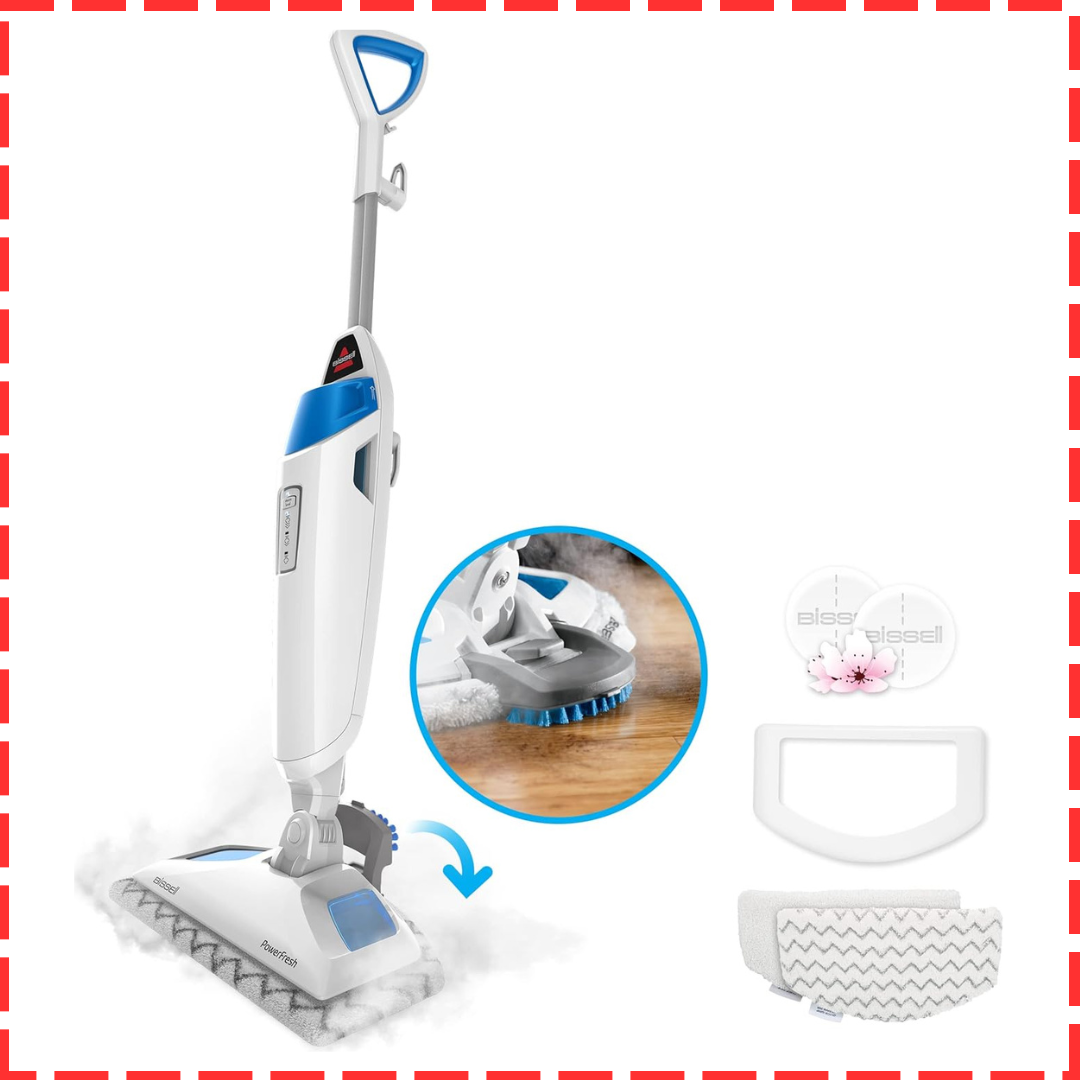
| Brand | Bissell |
| Special Feature | Steam Control |
| Surface Recommendation | Floor |
| Model Name | BISSELL PowerFresh Steam Mop, Floor Steamer, Tile Cleaner, and Hard Wood Floor Cleaner, 1940 |
| Included Components | Steam Head Attachment |
- The weight is very light.
- Both vacuuming and scrubbing.
- It helps to scrub surfaces.
- It does not work for carpet dirt.
- There is no cordless design for this machine.
2. Shark Navigator (NV352) – Best Vacuum For Tile Floors And Pet Hair
- Nullify
- Made in USA or Imported
- LIFT-AWAY FUNCTIONALITY: lift away the detachable pod and easily clean above-floor areas like stairs, furniture, and more.
- ANTI-ALLERGEN COMPLETE SEAL TECHNOLOGY: Works with a HEPA filter to trap dust and allergens inside the vacuum cleaner.
- POWERFUL & LIGHTWEIGHT: Powerful suction to deep-clean carpets and tackle bare floors with a lightweight design for effortless portability.
- BRUSHROLL SHUTOFF: This feature allows you to switch instantly from deep carpet cleaning to gentle bare floor cleaning.
- SWIVEL STEERING: Easily maneuver your vacuum in and out of tight spaces, in corners, around furniture, and more.

| Brand | Shark |
| Special Feature | Portable, Lightweight, Wheels, Hypoallergenic, HEPA |
| Filter Type | Foam |
| Included Components | Upholstery tool, Crevice tool |
| Is Cordless? | No |
- Smoothly clean the challenging areas.
- Powerful suction system.
- User-friendly and easy to control.
- It might be heavy for some users.
Related: Best Vacuums for Pet Hair
3. Shark Rocket DuoClean Ultra -Best Bagless Vacuum For Tile Floors
- Duo clean technology: Dual brush roll system deep cleans carpets and directly engages floors for a polished look.
- Ultra lightweight, it converts into a 4.5-pound handheld vacuum for versatile above-floor cleaning.
- Brushroll garage for easy access to the brush roll for maintenance.
- Pet multi-tool: Designed to capture embedded pet hair on all surfaces
- Led lights on the floor nozzle and handheld vacuum to help spot hidden debris throughout your home
| Brand | Shark |
| Special Feature | Removable dust cup |
| Filter Type | Foam |
| Included Components | Floor Nozzle, Wand, Dusting Brush, Duster Crevice Tool, Upholstery Tool, Onboard Storage Clip, Accessories Bag, Wall Mount, Pet Multi-Tool |
| Is Cordless? | Yes |
- Reasonable price.
- Easy to maintain.
- User-friendly.
- The brush roll often hampers the fur
4. Hoover Linx SH20030 – Best Stick Vacuum For Tile Floors
- CYCLONIC TECHNOLOGY: Ensures a consistent cleaning Experience with no loss of suction
- EXTREME RECLINE HANDLE: Reaches under furniture for easier access without having to move things around
- EDGE CLEANING BRISTLES: Removes dirt, dust and pet hair up against those hard-to-reach edges
- Multi FLOOR CLEANING: Transitions from carpet to hard floors with ease
- Powerful REACH: 20-foot cord extends room to room
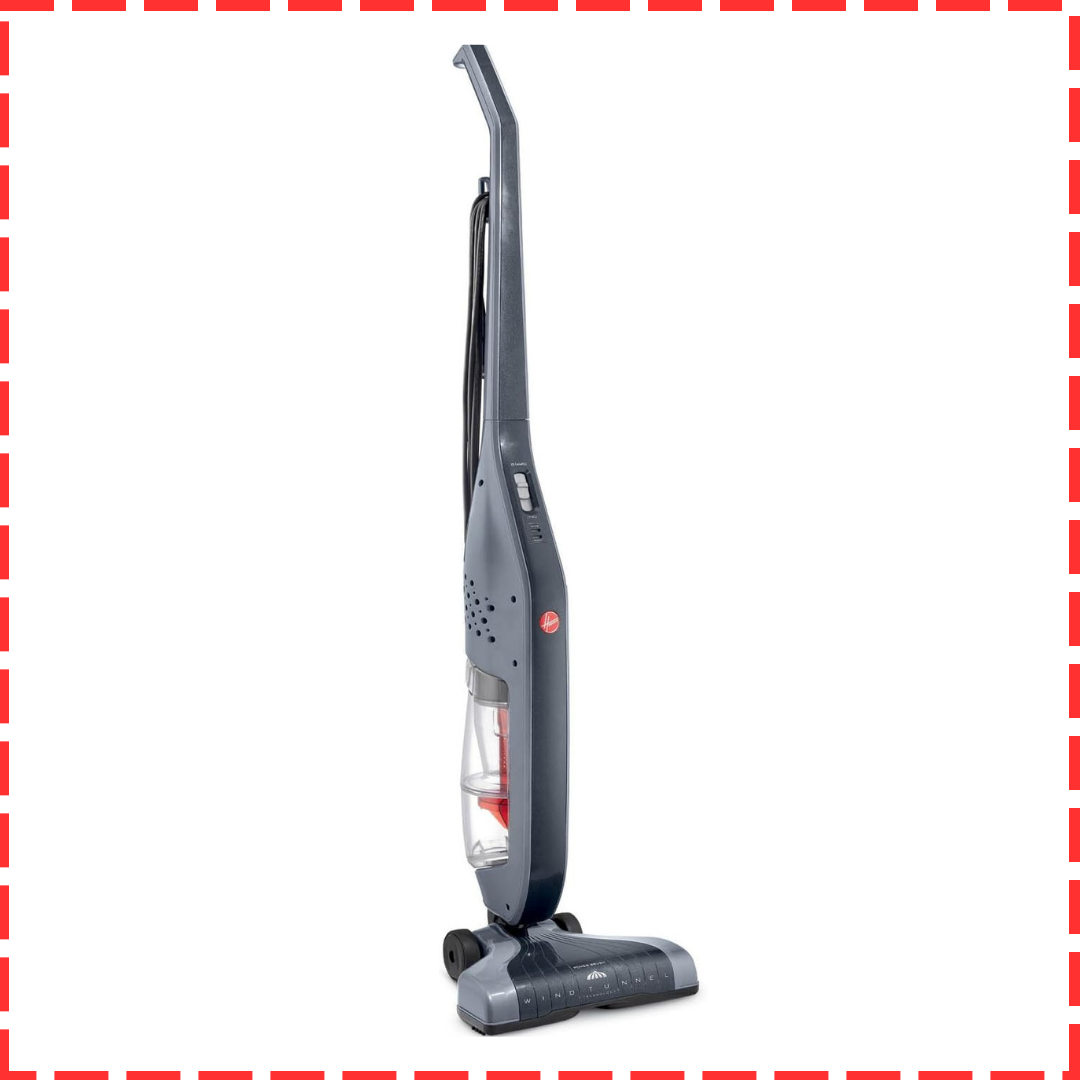
| Brand | Hoover |
| Special Feature | Edge Cleaning Bristles |
| Filter Type | Standard |
| Included Components | Kitchen Accessories, Products |
| Is Cordless? | No |
- Easily handle.
- Low Price
- Powerful Suction.
- It’s a very short cord.
- There is no hose.
Related: Best Carpet Vacuum Cleaners
5. Ecovacs DEEBOT N79S – Best Robot Vacuum For Tile Floors
- Max Mode Cleaning: Increase your cleaning power by 2x whenever you need to use the app or remote control.
- Smart App & Voice Controls: Use Alexa or Google Home voice commands to direct cleaning. Use the ECOVACS App to customize, schedule & monitor cleaning sessions and accessory status, & receive error alerts.
- Auto-Clean plus 3 Specialized Cleaning Modes: Smart motion guided auto-clean mode, plus single room & spot mode for targeted cleaning, & edge mode for hard-to-clean edges.
- Ecovacs Basic Features: Includes our unique 3-stage cleaning system, anti-drop & anti-collision sensors, 120-minute battery life, auto-return charging, automatic software update, durable protective bumpers, air filtration, anti-scratch finish, a large easy-to-empty dustbin, large wheels for climbing thresholds, etc.
- 1-Year Warranty, plus Accessories: Includes (1) remote control, (1) main brush, (2) side brushes, (1) docking station & fantastic customer support. Note we can not guarantee after-sales service to customers outside the United States.
- Power Source Type: Battery Powered
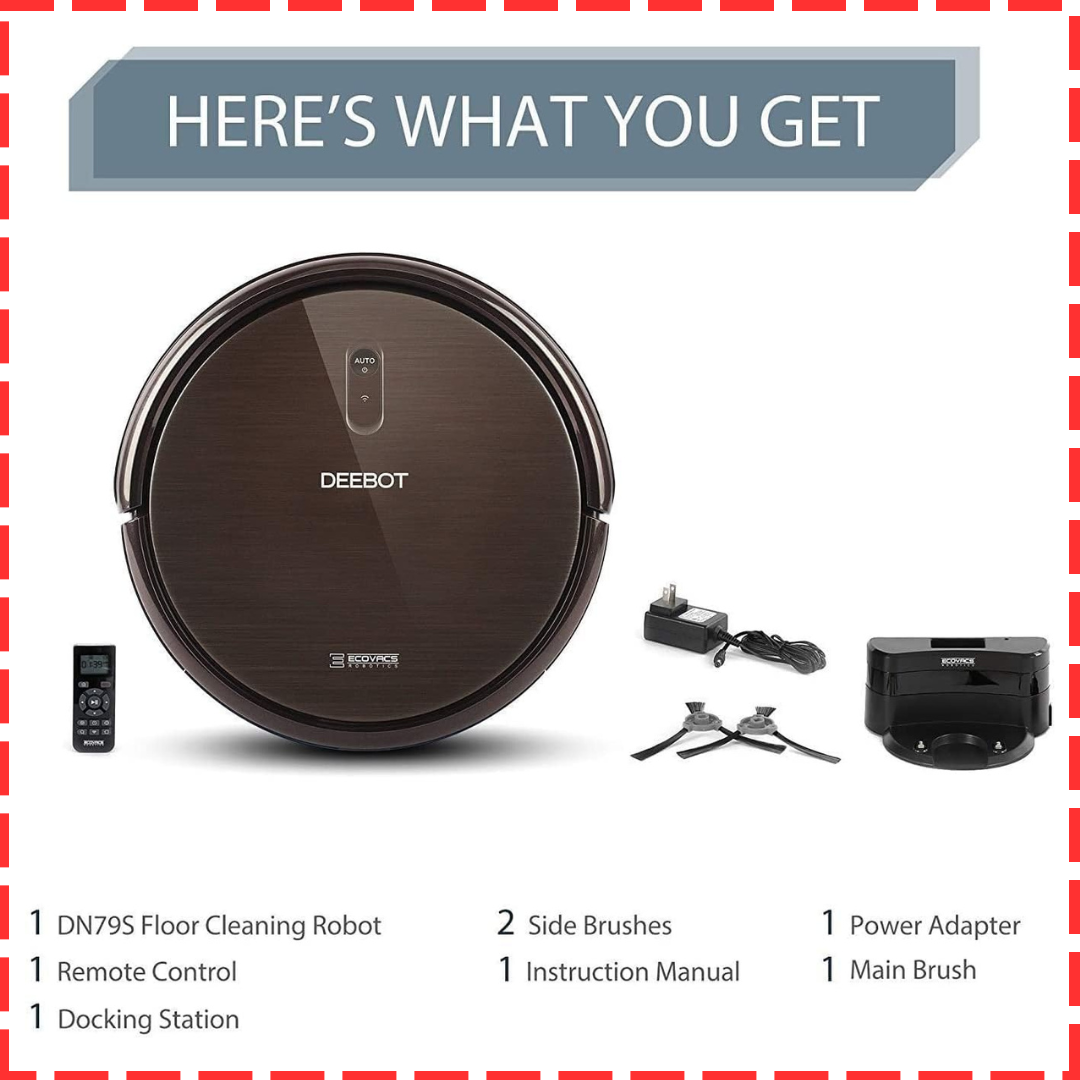
| Brand | ECOVACS |
| Model Name | n79s |
| Special Feature | Works with Alexa, Up to 120 Min, Quiet, Hard Floors & Carpets, Self-Charging, Max Power Suction, App Controls |
| Colour | Dark Brown |
| Product Dimensions | 12.2″L x 12.2″W x 2.24″H |
- Cleans the tile floor very nicely.
- It works independently but has to give direction.
- Easy to control
- It might get stuck.
Conclusion: The Importance of a Good Vacuum for Maintaining Clean and Beautiful Tile Floors
As we wrap up our exploration of tile floor maintenance, it’s evident that investing in a good vacuum cleaner is paramount for achieving and sustaining clean and beautiful tile floors. Here’s why a quality vacuum is indispensable:
Effective Dirt Removal:
- A perfect vacuum cleaner with powerful suction and specialized attachments effectively removes dirt, dust, and debris from tile floors, ensuring thorough cleaning and preventing buildup that can dull the flooring’s appearance.
Gentle Cleaning Action:
- Modern vacuums are designed with features such as soft brush rolls and adjustable suction power, providing gentle yet effective cleaning that preserves the integrity of tile surfaces and prevents scratches or damage.
Versatility and Convenience:
- Vacuum cleaners offer versatility in cleaning various surfaces. They are convenient to use, allowing you to quickly and efficiently clean your tile floors without the need for multiple cleaning tools or excessive manual labour.
Improved Indoor Air Quality:
- Vacuum cleaners equipped with HEPA filtration systems capture and contain dust and allergens, improving indoor air quality and creating a healthy living environment for you and your family.
Time and Labor Savings:
- Having a high-quality vacuum cleaner saves time and energy by easily keeping your tile floors clean instead of using traditional methods like sweeping or mopping.
A good vacuum cleaner is an indispensable tool for maintaining the cleanliness, beauty, and longevity of your tile floors. By investing in a quality vacuum and incorporating regular vacuuming into your floor maintenance routine, you can enjoy pristine and inviting tile floors that enhance the overall ambience of your home. So, embrace the power of vacuuming and take pride in your impeccably clean and stunning tile floors for years to come!
Frequently Asked Questions (FAQs)
Can I use a regular vacuum cleaner on tile floors?
Yes, You can use a regular vacuum cleaner on tile floors. However, it's recommended to use one with a tricky floor setting or attachments designed for hard surfaces to prevent scratching or damaging the tiles.
How often should I vacuum my tile floors?
The frequency of vacuuming tile floors depends on factors such as the presence of pets, foot traffic, and the level of debris and dirt. In general, vacuuming once or twice a week should suffice for regular maintenance.
Should I sweep or vacuum tile floors first?
It's generally more efficient to vacuum tile floors before sweeping, as vacuuming can remove finer particles and debris that may be missed by sweeping alone. However, if there is larger debris or spills, it's advisable to quickly sweep or spot clean before vacuuming.
Can I use a steam vacuum cleaner instead of vacuuming tile floors?
Steam vacuum cleaning can be an effective method for cleaning tile floors, as it helps to disinfect and loosen stubborn dirt and grime. However, vacuuming beforehand can help remove loose debris and prepare the surface for more thorough cleaning with a steam cleaner.
How do I prevent scratching my tile floors while vacuuming?
To prevent scratching, ensure that your vacuum cleaner has appropriate attachments or settings for hard floors. Avoid using vacuum cleaners with beater bars or stiff bristles on tile floors, as these can scratch the surface. Additionally, regularly inspect the vacuum's wheels and underside to ensure they are clean and free of debris that could potentially scratch the tiles.
Can I use a vacuum to remove pet hair from tile floors?
Yes, vacuum cleaners equipped with pet hair attachments or specialized brushes can effectively remove pet hair from tile floors. Ensure that the vacuum has sufficient suction power to lift pet hair, and consider vacuuming more frequently if pet hair tends to accumulate quickly.
Should I use a dry or wet vacuum on tile floors?
For routine maintenance, a dry vacuum is sufficient for removing dust, dirt, and debris from tile floors. However, if dealing with spills or stubborn stains, a wet vacuum or steam cleaner may be more appropriate. Be sure to follow manufacturer guidance and avoid using excessive moisture, especially on unsealed or porous tile surfaces.
How do I clean grout lines while vacuuming tile floors?
While vacuuming, you can use a crevice tool or attachment to target grout lines and remove trapped dirt and debris. For deeper cleaning of grout, consider using a grout cleaner or brush attachment along with your vacuum cleaner, or opt for manual scrubbing methods as needed.
Can I use a robot vacuum to clean tile floors?
Yes, many robot vacuum cleaners are specifically engineered to clean tile floors efficiently. Look for models with sensors to navigate around obstacles and avoid falling down stairs. Additionally, ensure the vacuum has appropriate settings or attachments for hard floors, and regularly empty the dustbin to maintain optimal performance.
Is it necessary to move furniture when vacuuming tile floors?
Ideally, it's best to move lightweight furniture or items to access all areas of the tile floor during vacuuming. However, if moving furniture is not possible, use vacuum cleaner attachments or crevice tools to clean around and underneath furniture as thoroughly as possible. Regularly moving furniture can help prevent dirt and debris buildup in hard-to-reach areas.

